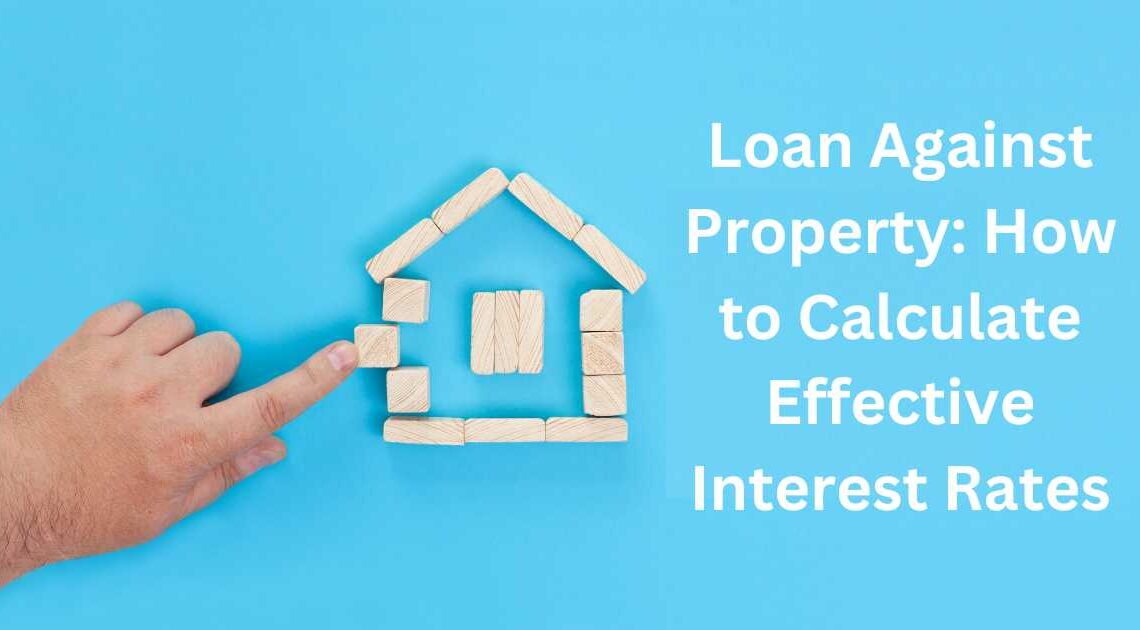Calculate Effective Interest Rates on Loan Against Property: When you want to borrow money using a property as security, you might hear about something called an effective interest rate. This term can sound a bit complicated, but it’s really just a way of understanding how much it will actually cost you to borrow that money. Let’s dive into what effective interest rates are and how you can calculate them for loans against property.
What is an Effective Interest Rate?
First off, the effective interest rate is a more accurate number that shows you how much interest you’re really paying on a loan. It’s different from the stated interest rate, because it takes into account things like how often interest is actually added to your loan (which could be monthly, quarterly, or yearly) and any other costs or fees.
Why is this important? Well, knowing the effective interest rate can help you figure out the true cost of your loan, and it can also help you compare different loan options more fairly.
Why Use Property as Security?
When you use your property as security for a loan, you’re basically promising the lender that if you can’t pay back the loan, they can take the property to settle your debt. Because this makes the loan less risky for the lender, they might offer you a lower interest rate than they would for an unsecured loan. However, it’s essential you understand how much it’s genuinely costing you, which is where the effective interest rate comes in.
Calculating the Effective Interest Rate on Loan Against Property
To calculate the effective interest rate on a loan against property, you’ll need to know a few key pieces of information:
- The nominal interest rate: This is the interest rate the lender gives you. It doesn’t account for the frequency of compounding or any additional costs.
- The number of compounding periods per year: This is how often interest is added to your total loan amount. It could be monthly (12), quarterly (4), semi-annually (2), or annually (1).
- Any additional costs: This includes fees or charges associated with taking out the loan, like processing fees. You should convert these costs into a percentage of the loan amount.
Here’s a Step-by-Step Process to Calculate It:
- Add Any Additional Costs to the Nominal Interest Rate:
If you have a nominal interest rate of 10% and there are additional costs equal to 2% of your loan amount, your adjusted interest rate would be 12%. - Convert Your Nominal Interest Rate into a Decimal:
Simply divide by 100. So, 12% becomes 0.12. - Divide the Adjusted Rate by the Number of Compounding Periods:
If your interest compounds monthly (12 times a year), you would divide 0.12 by 12, giving you 0.01. - Add 1 to This Number:
Continuing with our example, this gives you 1.01. - Raise This Number to the Power of the Number of Compounding Periods:
So, 1.01 raised to the power of 12 equals 1.1268. - Subtract 1 from This Result:
This gives you 0.1268 or 12.68%. - Convert Back to a Percentage:
By multiplying by 100, you get your effective interest rate, which, in this case, is 12.68%.
Using this method, you can find out the true cost of your loan against property. It’s worth noting that the more frequently interest is compounded, the higher the effective interest rate will be.
Also Read: Applying for a Two-Wheeler Loan Online in India: A Comprehensive Guide
An Example to Understand It Better
Imagine you’re taking a loan of $100,000 against your property with a nominal interest rate of 10%, compounded monthly, and there are no other additional costs.
Following our steps:
- The nominal rate is 10%, so we don’t need to adjust it for additional costs.
- Convert the nominal rate to a decimal: 10% / 100 = 0.1.
- Divide by the number of compounding periods: 0.1 / 12 = 0.008333.
- Add 1: 1 + 0.008333 = 1.008333.
- Raise to the power of 12: ((1.008333)^{12}) = 1.1047.
- Subtract 1: 1.1047 – 1 = 0.1047.
- Convert to a percentage: 0.1047 * 100 = 10.47%.
So, the effective interest rate is 10.47%, which means the true cost of your loan against your property is slightly higher than the nominal rate would suggest.
Wrapping Up
Understanding how to calculate the effective interest rate on loans against property can help you make smarter decisions about borrowing. It shows you the real cost of a loan, considering everything from compounding interest to fees. Always take your time to figure this out before agreeing to a loan, and consider talking to a financial advisor if you’re unsure. Knowing the true cost of borrowing can save you a lot of money and stress in the long run.



